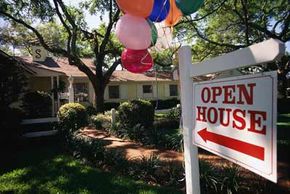Key Takeaways
- Condominiums are individual units within a complex where owners do not own the land but share common areas, often accompanied by a homeowners' association fee.
- Co-operatives (co-ops) involve purchasing shares in a corporation that owns the building, granting the right to occupy a unit, typically with stricter residency rules and collective building maintenance.
- Mobile homes are transportable living spaces that depreciate like vehicles, and ownership can vary based on whether the land is leased or owned. Meanwhile, townhouses are multi-floor homes sharing one or two walls with adjacent properties, offering individual ownership of the dwelling and the land.
The world of residential real estate is huge -- if you're in the market to buy a home, it could get a bit confusing. Let's take a look at the five main forms that a non-rental home may take and try to sort out the differences:
- house
- townhouse
- condominium (condo)
- cooperative (co-op)
- mobile home
House
When most of us talk about a house, we're referring to a free-standing, single-family residence. There is also such thing as a duplex house -- a free-standing structure divided into two, connected, single-family units.
Advertisement
The main defining characteristic of a house, besides its free-standing nature, is the breadth of ownership responsibility taken on by the buyer. The owner of a house owns the building itself, as well as the land, and is responsible for all upkeep associated with those areas, including lawn and landscape maintenance, painting, repairs and real estate taxes.
Sometimes, houses may be grouped together in a definite community that has shared spaces, such as a pool or playground. These home owners pay a fee to a home owners' association, which maintains the shared spaces and may provide such services as lawn care, landscaping, and security. The home owners' association sets rules and regulations for the community, some even pertaining to the aesthetic appearance of the houses.
Townhouse
A townhouse is like a house in that the owner owns both the structure and the land on which it sits; but it is not free-standing, so "the land on which it sits" is limited to the front and back yards. Townhouses are connected to one another in a row, and are usually two or three stories tall. They share many of the characteristics of condominiums.
Advertisement

